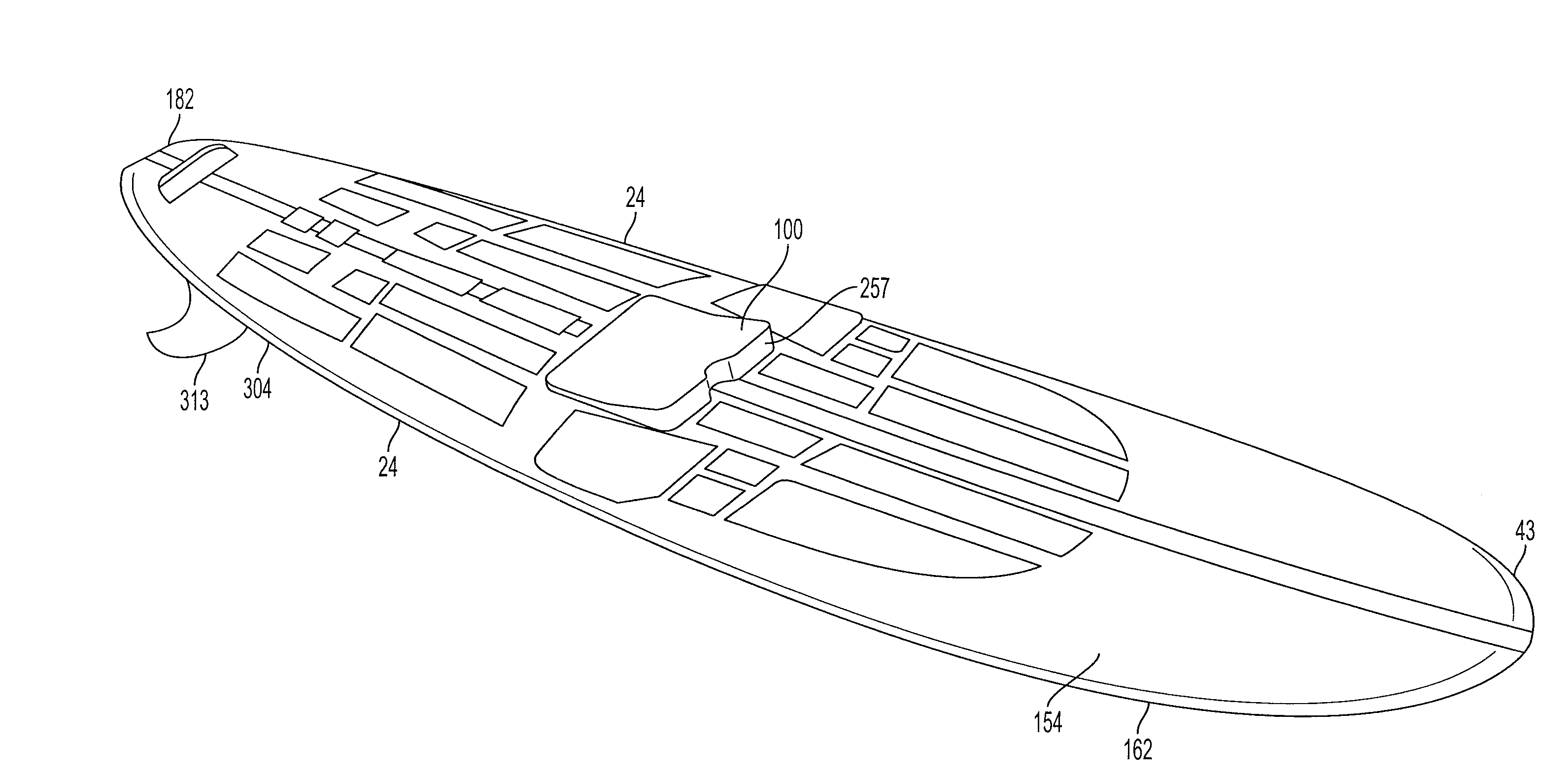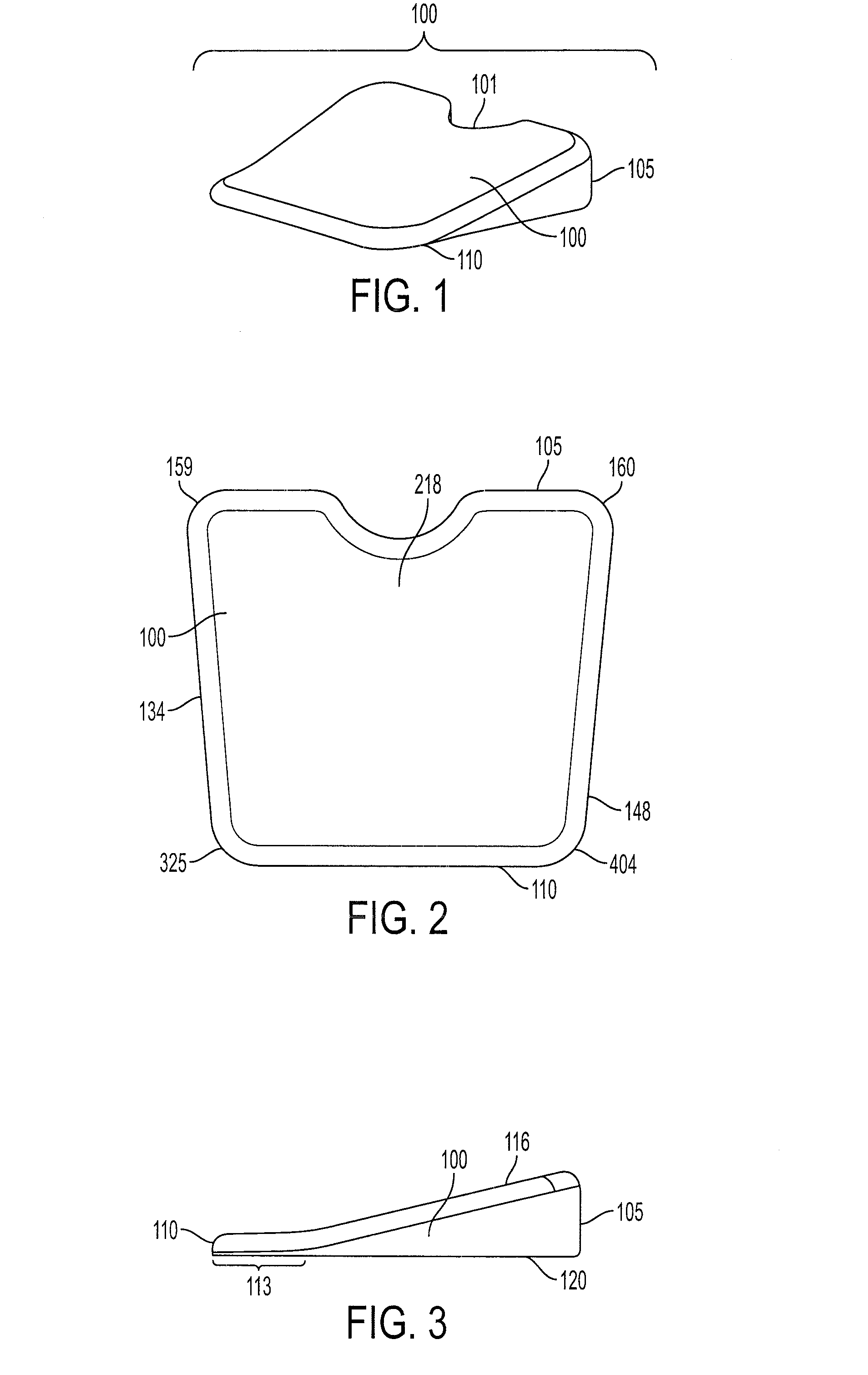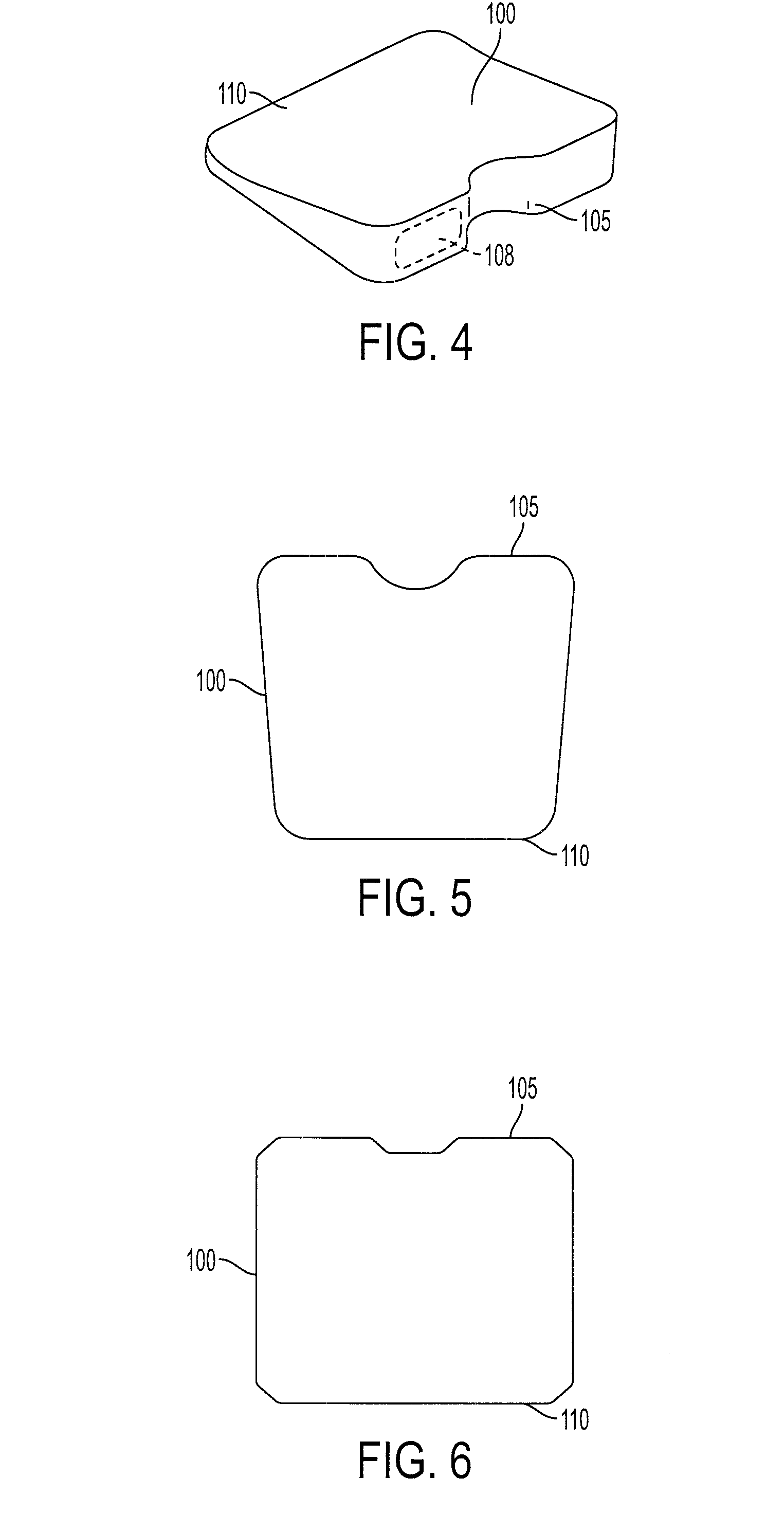Paddle to Pop-up Device
a pop-up device and paddle technology, applied in the field of paddleboards and surfboards, can solve the problems of becoming much harder to paddle in the ocean, affecting the stability of paddleboarding,
- Summary
- Abstract
- Description
- Claims
- Application Information
AI Technical Summary
Benefits of technology
Problems solved by technology
Method used
Image
Examples
Embodiment Construction
)
[0046]The following detailed description illustrates by way of example and not by way of limitation. The term surfboard, as used herein generally refers to longboards, funboards, shortboards, and other surfboards where a user will generally stand, at least for a portion of the time, on the board and where it is generally necessary to switch from the prone paddling position to the standing position. The embodiments, herein will generally be focused on the device's use on surfboards since on these devices popping-up is generally part of the traditional manner of use. It should be recognized that the device can also be used on paddleboards or any other similar buoyant equipment which is intended to be used only in the prone position without popping up. Use on these boards, however, is generally a simplified version of the use on a surfboard.
[0047]Described herein, among other things, is a device (100) that attaches to a surfboard (304) that serves as a wedge between the body of the us...
PUM
 Login to View More
Login to View More Abstract
Description
Claims
Application Information
 Login to View More
Login to View More - R&D
- Intellectual Property
- Life Sciences
- Materials
- Tech Scout
- Unparalleled Data Quality
- Higher Quality Content
- 60% Fewer Hallucinations
Browse by: Latest US Patents, China's latest patents, Technical Efficacy Thesaurus, Application Domain, Technology Topic, Popular Technical Reports.
© 2025 PatSnap. All rights reserved.Legal|Privacy policy|Modern Slavery Act Transparency Statement|Sitemap|About US| Contact US: help@patsnap.com



